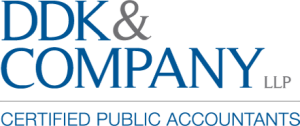
NYC Employers with 20+ Full Time Employees Commuter Benefits Update – FAQ
- What is the NYC Transit Ordinance?
The NYC Transit Ordinance, Local Law 53 (Intro 295-A), is a transit benefit ordinance
requiring New York City employers with 20 or more full-time employees to offer pre-tax
transit benefits.
- Who is considered a full-time employee?
The law defines a full-time employee as someone who works on average 30 hours or
more per week for an employer.
- Are there any exemptions?
Yes, Federal, state, and local government entities and those employers “where a
collective bargaining agreement exists between any group of employees and an
employer.” However, at companies where the number of full-time employees not
covered by a bargaining agreement is 20 or more, those employees that are not
covered must be offered the benefit. There is a third exemption for companies that are
not required by law to pay federal, state, and city payroll taxes.
- When will this go into effect?
The NYC Transit Ordinance will go into effect on January 1, 2016. However, companies
will have a 6-month grace period to comply. Any company that doesn’t comply by July
1, 2016, will be subject to a civil penalty. If found in violation of the Ordinance,
employers will have 90 days to comply before any penalties are imposed.
- What is the penalty for failing to comply?
First violation penalties will range between $100 and $250. Any subsequent violations
will cost $250 for each month (or 30 days) the company is not in compliance.
- Employers have 90 days to fix violations before penalties are imposed? How does
that work?
If you are fined for failing to comply with the NYC Ordinance, you will have 90 days to
comply in order to avoid the penalty.
- What happens if a company doesn’t comply within that 90-day window?
Any company that doesn’t comply during the 90-day violation window will be charged
with a subsequent violation and will have to pay an additional $250 penalty every 30
days until compliance is completed.
- Who will enforce the NYC Transit Ordinance?
The Department of Consumer Affairs will be administering this law and is now
developing rules and enforcement procedures.
- My business is headquartered outside of New York City. Does the Ordinance still
apply?
It depends on whether or not you have offices in New York City. If you have 20 or more
employees that work in the 5 boroughs, then yes, the Ordinance applies to your
company.
- Does this Ordinance cover employees that commute into the city from the
suburbs?
Yes, if you have employees commuting from the suburbs to an office in one of the 5
boroughs, then yes, it includes them.
- My company has an office in New York City and one in Long Island. Do I have to
offer the Benefit to my Long Island office, too?
Technically, you only have to offer the Benefit to employees working in your offices
located in New York City’s 5 boroughs. But, the more employees that use the Benefit,
the more you save on payroll taxes. So, why not offer it to those working and taking
public transportation in Long Island, too?
- Do my employees have to be residents of New York to qualify for the Benefit?
No, they just have to work in one of the 5 boroughs.
- I know the Ordinance doesn’t apply to part-time employees. But, can I offer them
Commuter Benefits anyway?
Yes, you can.
- What if an employee doesn’t want the Benefit?
If employees don’t want to take advantage of saving on their commuting costs with
Commuter Benefits, that is their choice. As long as you offer a Commuter Benefit
program, you are in compliance with the law.
- What if my company is a non-profit?
Non-profit companies are NOT exempt from the Ordinance if they have 20 or more
employees working in New York City and pay payroll taxes.
- What do I have to do to show I’m in compliance?
The department of Consumer Affairs has not yet decided on what they intend to require
for documentation.
- How does a business comply with the New York Transit Ordinance?
The Ordinance is easy to comply with! Employers that currently offer pre-tax transit
benefits are already compliant. Ahead of the December 31st deadline, any employer
that doesn’t already offer the benefit should sign-up. By doing so, employers will benefit
in three ways: First, they will become compliant, second, they will be saving payroll tax
dollars, and third, their participating employees will save on their personal income taxes.
